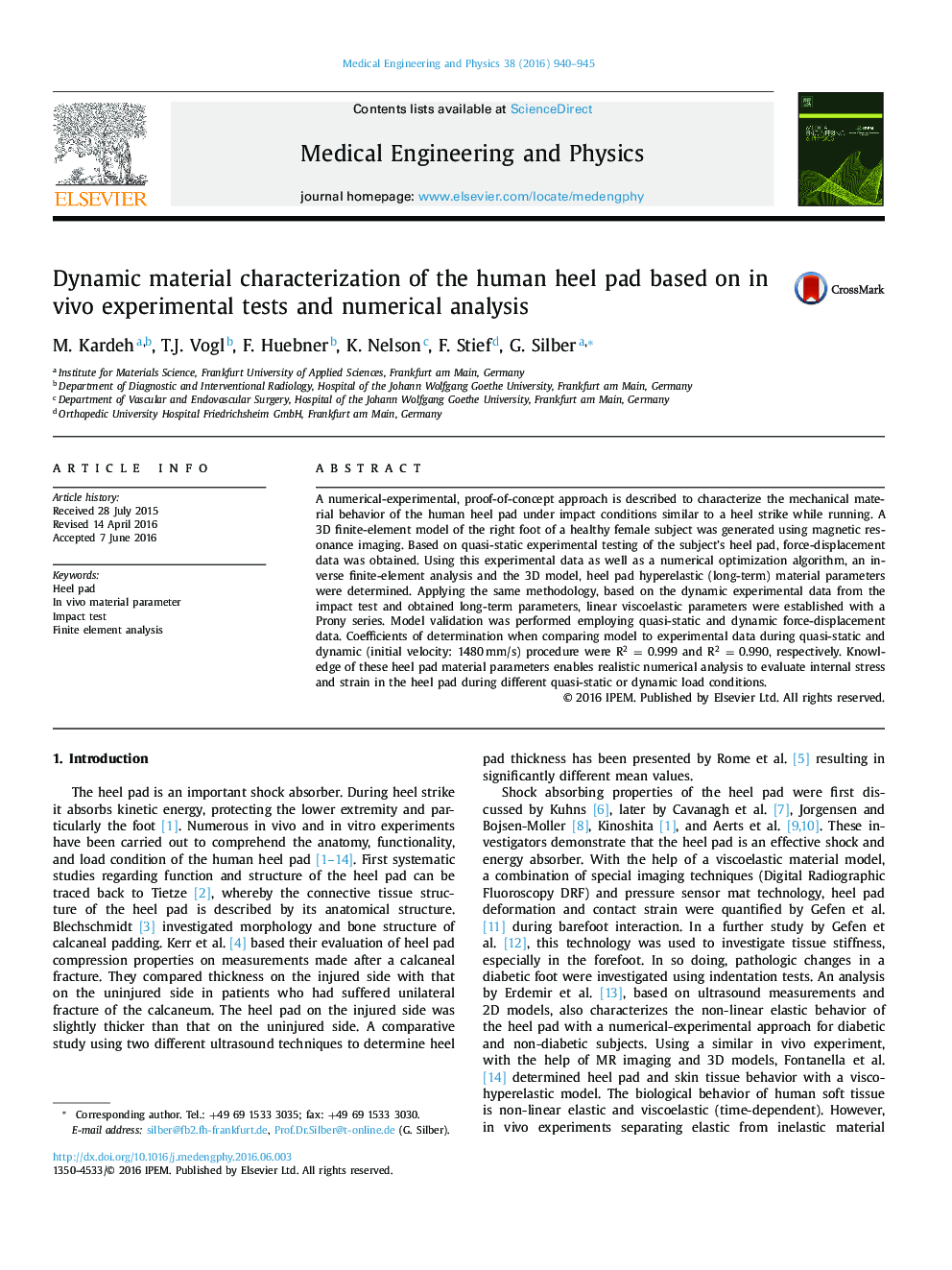| Article ID | Journal | Published Year | Pages | File Type |
|---|---|---|---|---|
| 875597 | Medical Engineering & Physics | 2016 | 6 Pages |
•Dynamic material properties of the heel pad under impact conditions are established.•Impact conditions are similar to a heel strike during running.•Quasi-static and dynamic tests separate elastic from inelastic material properties.
A numerical-experimental, proof-of-concept approach is described to characterize the mechanical material behavior of the human heel pad under impact conditions similar to a heel strike while running. A 3D finite-element model of the right foot of a healthy female subject was generated using magnetic resonance imaging. Based on quasi-static experimental testing of the subject's heel pad, force-displacement data was obtained. Using this experimental data as well as a numerical optimization algorithm, an inverse finite-element analysis and the 3D model, heel pad hyperelastic (long-term) material parameters were determined. Applying the same methodology, based on the dynamic experimental data from the impact test and obtained long-term parameters, linear viscoelastic parameters were established with a Prony series. Model validation was performed employing quasi-static and dynamic force-displacement data. Coefficients of determination when comparing model to experimental data during quasi-static and dynamic (initial velocity: 1480 mm/s) procedure were R2 = 0.999 and R2 = 0.990, respectively. Knowledge of these heel pad material parameters enables realistic numerical analysis to evaluate internal stress and strain in the heel pad during different quasi-static or dynamic load conditions.
